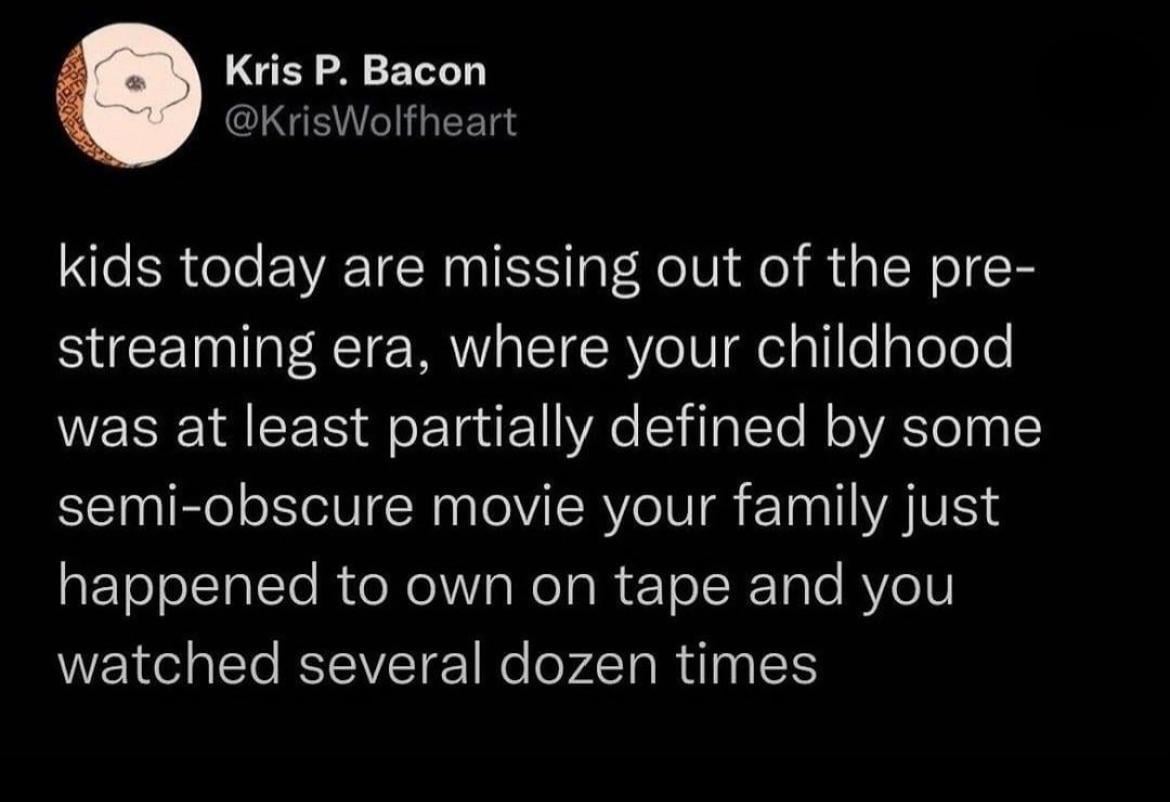this post was submitted on 24 Aug 2024
1305 points (98.9% liked)
People Twitter
5264 readers
1781 users here now
People tweeting stuff. We allow tweets from anyone.
RULES:
- Mark NSFW content.
- No doxxing people.
- Must be a tweet or similar
- No bullying or international politcs
- Be excellent to each other.
founded 1 year ago
MODERATORS
you are viewing a single comment's thread
view the rest of the comments
view the rest of the comments

I am a millennial. An older one at that. And I did already know how CRTs worked, but thank you. My question was how running slower, which usually means encoding information more stabily (think of any HDD and how it took a long time to get to the point where we could even run the disks at higher speeds), would mean the information is worse. I’m still not sure my question was answered. I’m guessing it has to do with the size of the write head, and maybe you are trying to say that the write head only has one speed, which would explain the problem a bit more. Therefore the slow tape speed wouldn’t result in any finer detail because the write head can’t write any finer grained, it has nothing to do with the speed of the tape.
Running slower means you have less space.
Dude, think of it like a photograph. If you had a lens that could squeeze a square frame into a narrower rectangle, you could advance the film any distance between frames, and scrunch the image to take up that much space. But the slower the film moves - the less distance there is between frames - and the scrunchier each image gets. There's an upper limit to how much detail any given area can capture. The film grain quickly becomes visible. When the image gets blown back up to its regular shape, some of the information has been lost, because the medium has finite detail.
A slow hard drive takes longer to access information. Video tape doesn't work that way. It displays in real time. When it moves at one inch per second, every frame gets 1/60th of an inch.
And at some point, it doesn't matter how much detail the head tries to write - the tape itself has limits. There are physical bits of metal, suspended in goo, stuck to clear plastic. The engineers of the format chose the lowest tape speed that could hold enough information for a picture with acceptable quality. If they could have stored the same information by running slower - they would have. And it would save the manufacturer a shitload of money, since they'd need less physical tape inside each cassette.